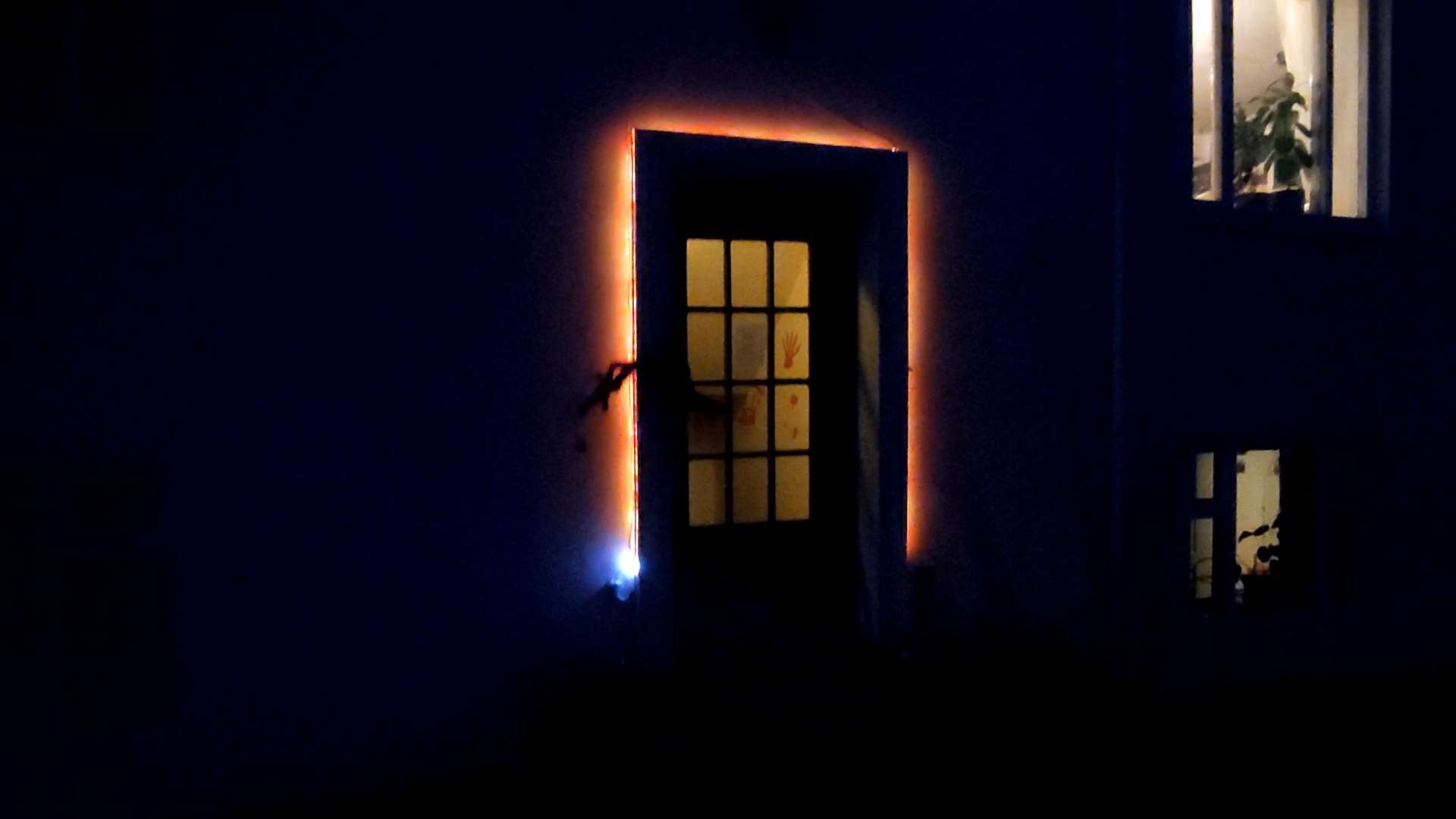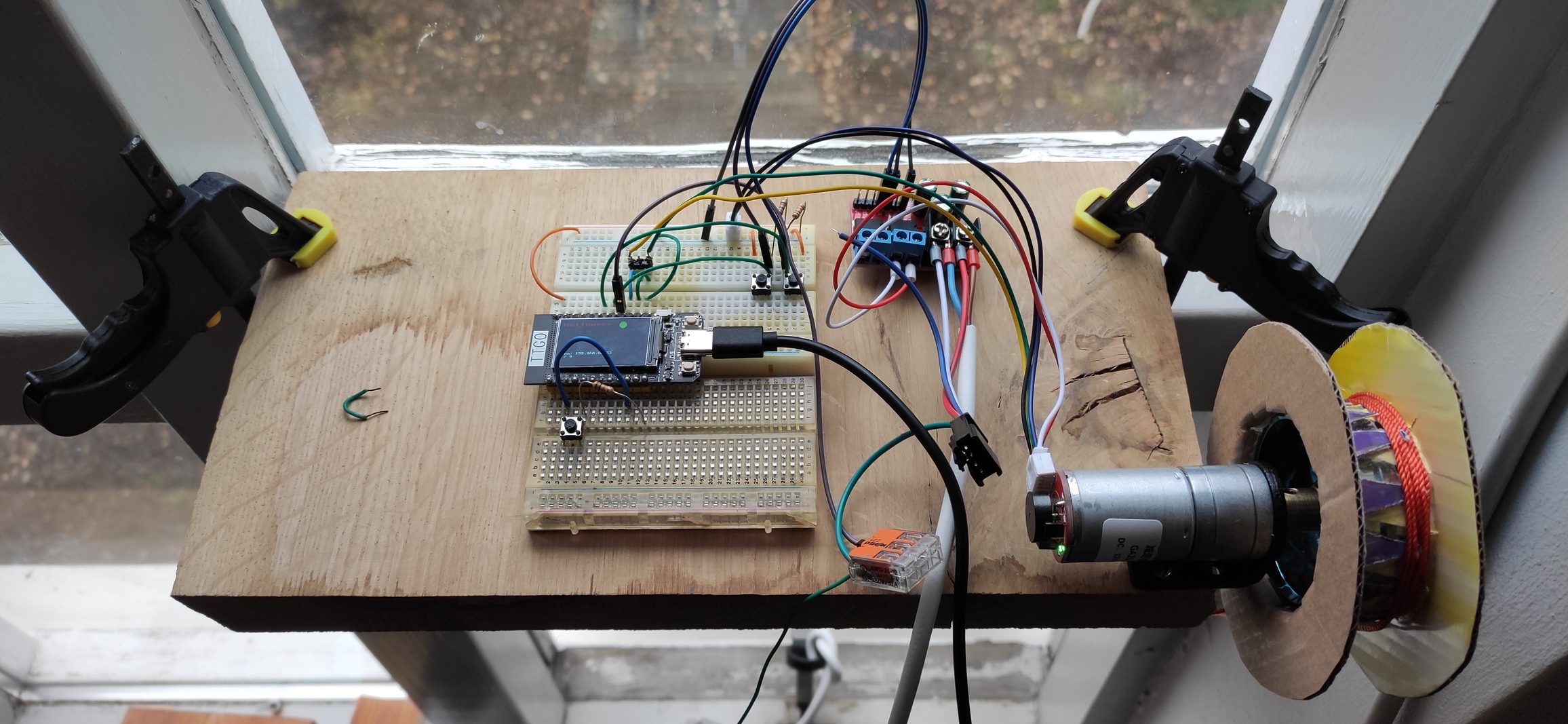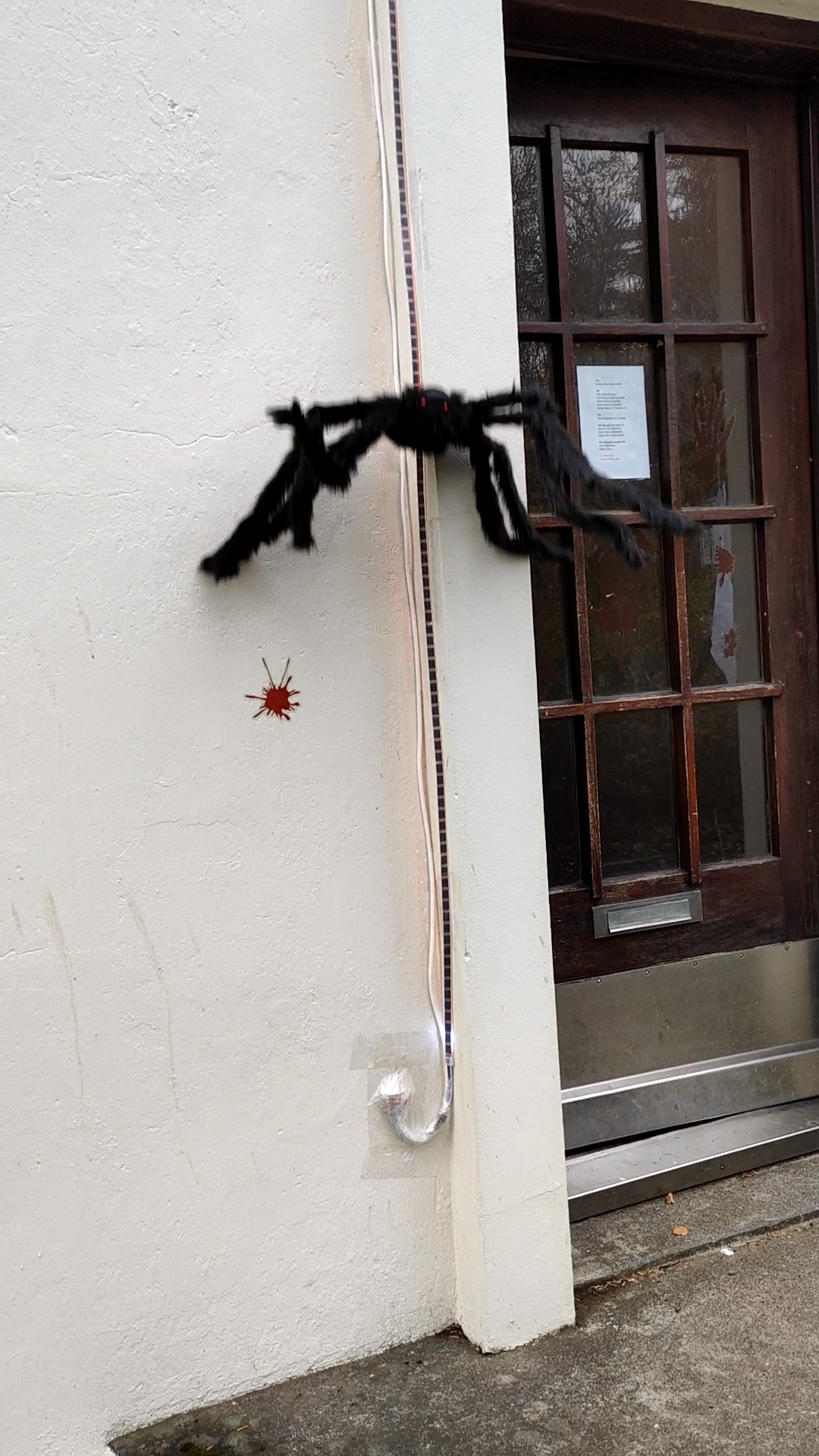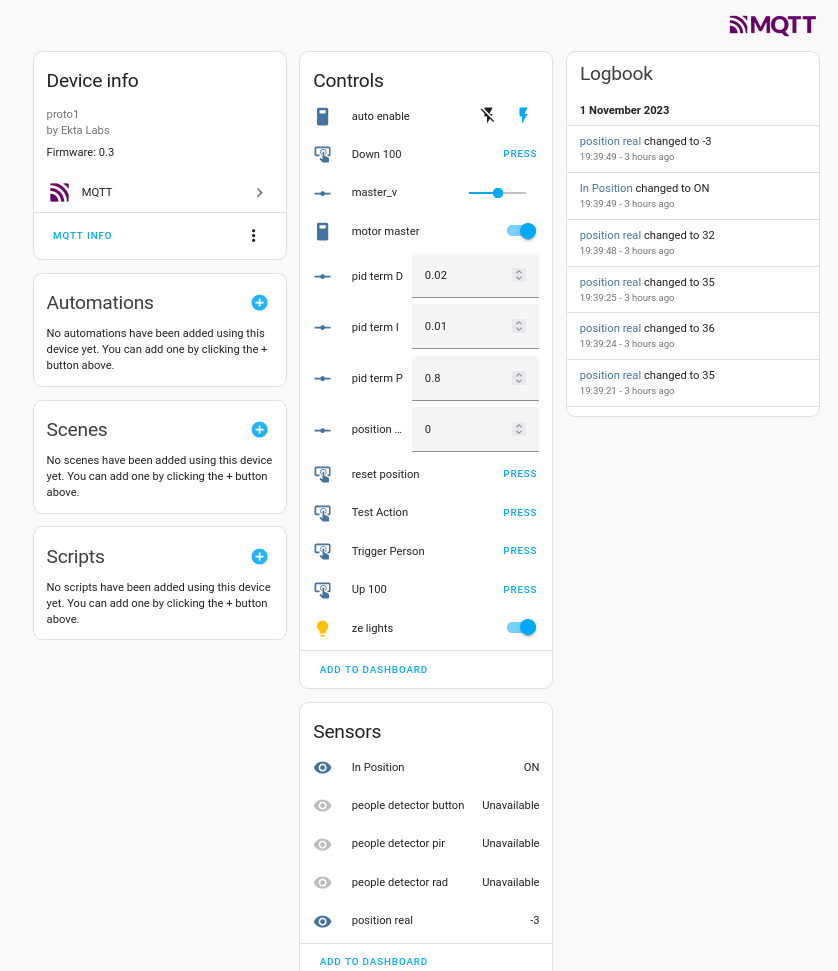This is the firmware for a halloween installation.
The general concept is:
- some pixel leds forming an animated frame around a door.
- motion sensors to detect trick-or-treaters approaching the door
- A spider on a string, motorized to jump up and scare guests.
- Connected to Home Assistant for monitoring and debug control
It's all done in micropython, on an ESP32, because that was something I wanted to try out a bit more.
The sensors tested, a cheap HC-SR505 PIR sensor and a cheap RCWL0516 "radar" turned out to be worthless outdoors. Oh well. I hooked up both a physical button, and a home assistant action to be able to trigger the animation effect by hand. That worked well enough to scare people, and have some fun, so we'll call it a success. Both of these worked well enough indoors at shorter distances, in testing...
The animation sequence and motor motion control would occasionally lose it's mind. I suspect improper handling of asyncio somewhere, but ... I never had a console on it long enough when it was problematic. Good enough for the oneoff it was, but definitely room for improvement.
- The ESP32 board is a Lilygo T-Display
- The Motor is a JGA25-370 geared DC motor. I used a 12V, ~600 RPM, and used a RC car wheel as the spool for my string.
- The motor drivers were the first cheap H-bridge I picked up that could do 12V. Specifically, I used a TA6586 module because the screw terminals and mounting hole made it easy to bodge up.
- The pixel strip is a 5M WS2815 strip, waterproof. I ran it with only 3.3v signalling, which I believe is the cause of the occasional glitches in colour. Obviously 5V drive would have been preferrable.
- find some damn sensors that have more range! asdfkadslfkds!!")(#)"#$!
- more status updates over mqtt
- more status updates on the screen
. /esp/somewhere/export.sh
git submodule update --init
make -C lib/micropython/ports/esp32 submodules
cd boards/CUSTOM_ESP32
idf.py build
....
profit
aka
podman run --rm --device /dev/ttyUSB1 -v .:/project -w /project/boards/CUSTOM_ESP32 -e HOME=/tmp espressif/idf:v5.0.4 idf.py -b 921660 build erase-flash flash
This repository structure is based on: https://github.com/micropython/micropython-example-boards
We're using an unmerged PR, to get support for the hardware encoder support on the ESP32. Without it, you'll never get viable encoder positions from a turning motor. The encoder_portable.py implementation I used initially is only really suited for UI dials. This should still "land soon"
We built and tested prometheus-aio because at one stage we were going to record all the "scarings" for fun reporting. But it ne ver really felt very performant, and it was very out of scope :)
We modified the neopixel built in code to be able to use slices. This was inspired by the blaz_neopixel project, which targets rp2040.
Working in HSV means even numkins like myself can do colour animations!



